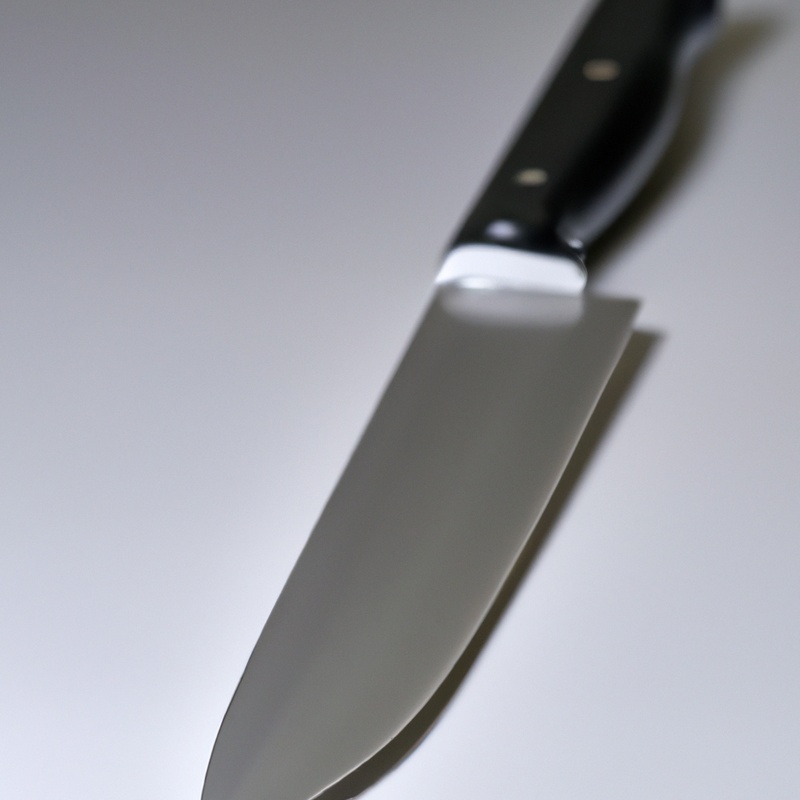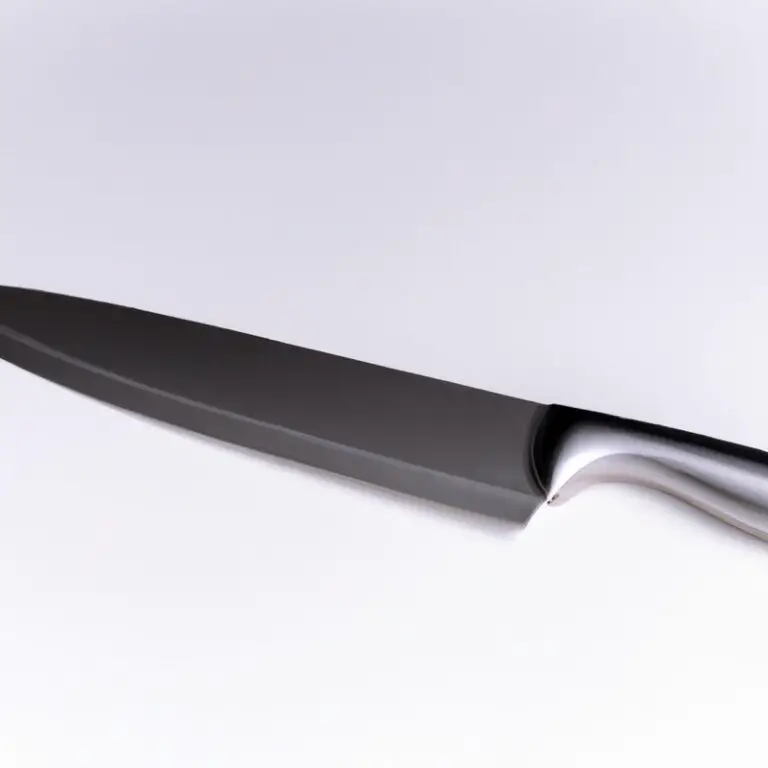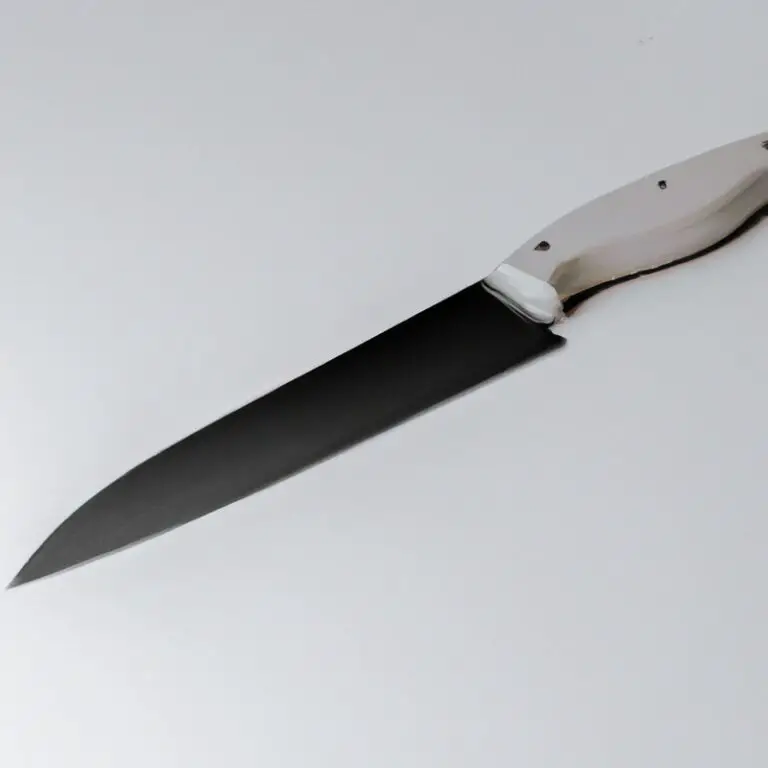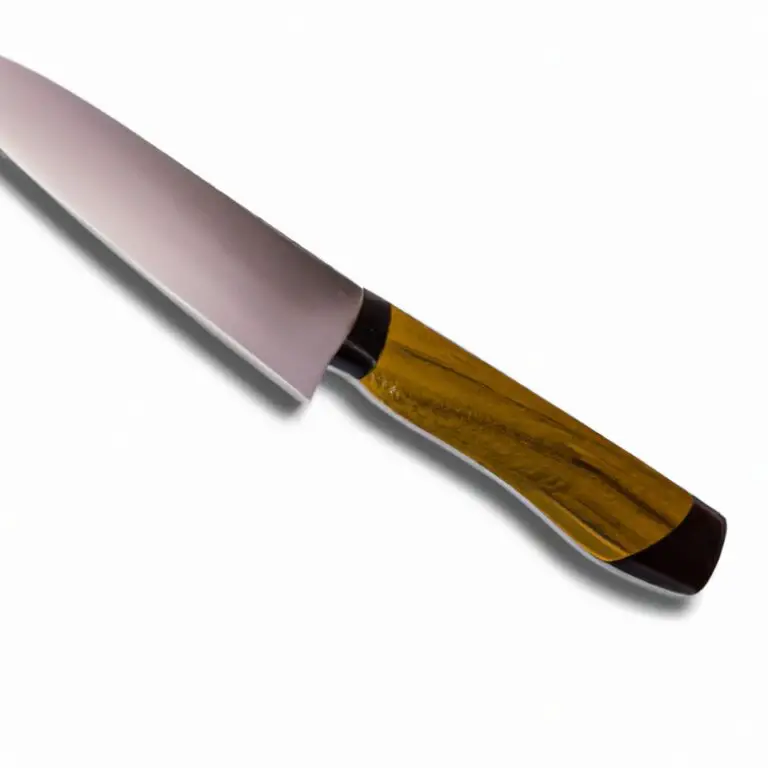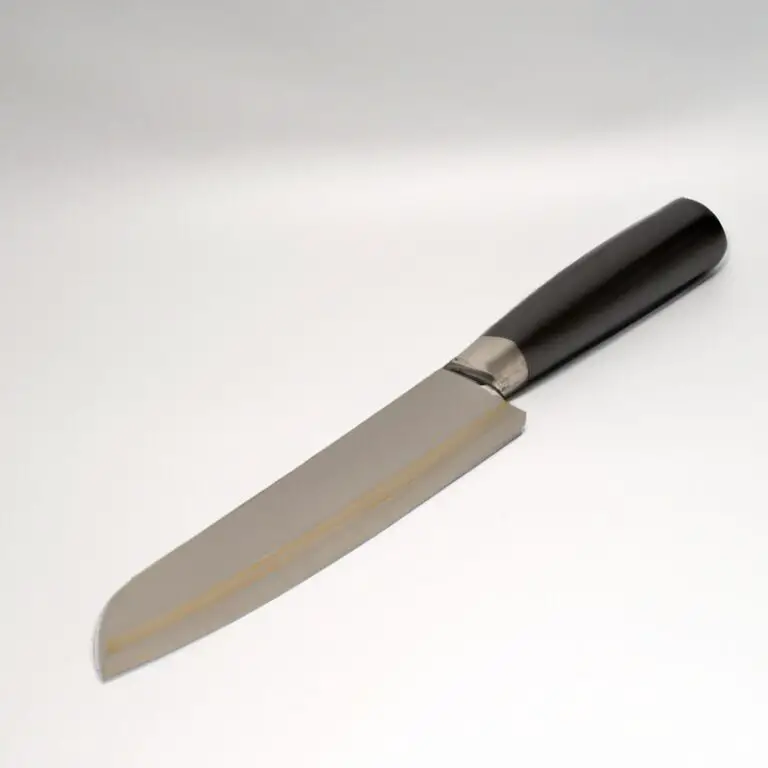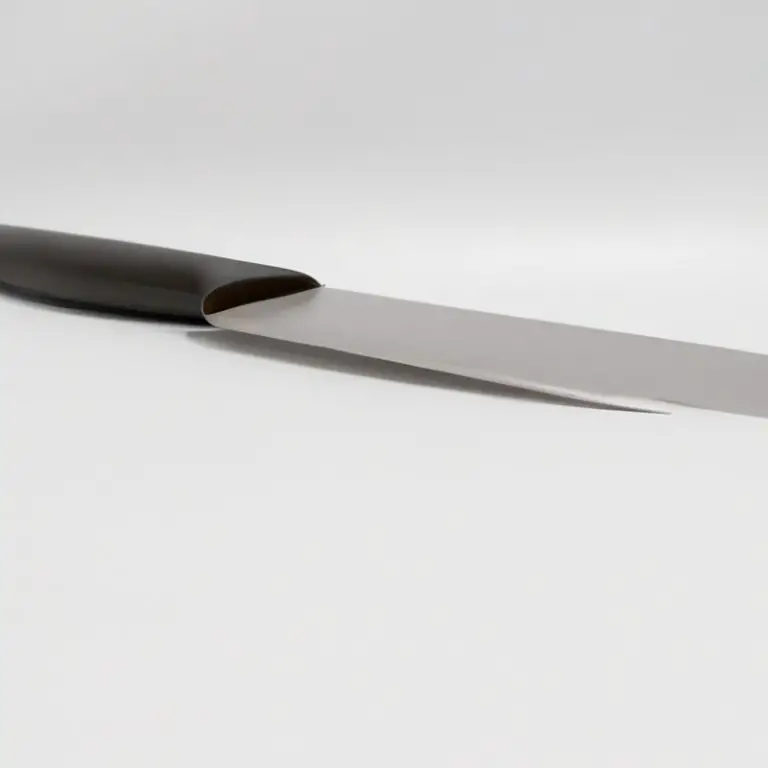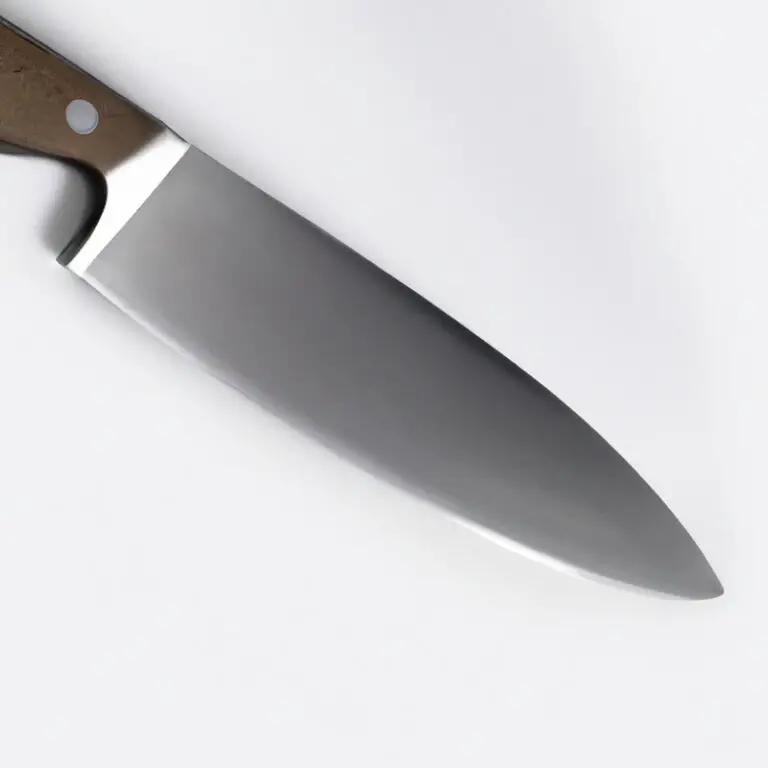How To Safely Grip a Chef Knife For Control And Safety? – Master The Chef Knife Like a Pro!
Key Takeaways:
- Proper knife grip is essential for safety and control while cooking.
- To grip a chef knife safely, wrap your fingers around the handle with your thumb and index finger on either side of the blade’s base.
- Keep your wrist straight and your fingers curled inwards, ensuring a secure and comfortable grip.
- Regularly honing and sharpening your knife can also improve knife control and safety.
Have you ever struggled with properly holding a chef’s knife while preparing a meal? A confident and comfortable grip is essential when it comes to achieving maximum control and ensuring safety in the kitchen.
In this article, we’ll explore the different parts of a chef’s knife, the importance of grip, and how to find the perfect size and weight for your hand.
We’ll also explain various gripping techniques for different cuts and ingredients, common mistakes to avoid, and even how to adjust your grip for left-handed use. Plus, we’ll give you some tips to strengthen your grip and maintain your knife for consistent performance.
Let’s get started and take your culinary skills to the next level!
| Knife Grip Technique | Description |
|---|---|
| Pinch Grip | Hold the knife handle with your three fingers (index, middle, and ring fingers) and your thumb on the blade opposite the index finger to provide maximum control and leverage. |
| Handle Grip | Wrap all four fingers around the knife handle and press your thumb down on the handle’s top or side, giving you less control than the pinch grip, but more comfort. |
| Santoku Grip | Place your index and middle fingers along the top of the blade, and wrap the remaining fingers around the handle. This grip is helpful for chopping and cutting tasks that require up and down movements and quick controlled movements. |
| Hybrid Grip | A combination of the pinch and handle grips, using three fingers and the thumb to hold the handle and guide the blade. |
| Reverse Grip | Hold the knife with your thumb and fingers wrapped around the blade and the handle resting on your palm. This is a less secure grip and should only be used for certain specific tasks. |
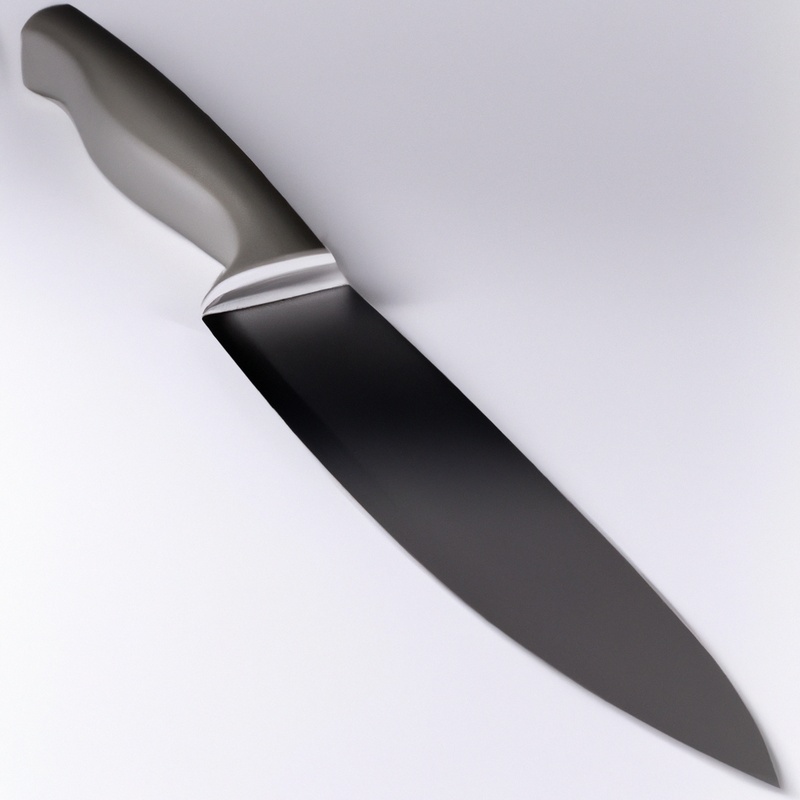
Understanding the Different Parts of a Chef Knife and Their Functions
A chef knife typically consists of three main components: the blade, handle, and bolster. Each part plays a crucial role in ensuring maximum control and safety while using the knife.
The blade is the cutting edge of the knife.
It usually ranges from 6 to 12 inches and can be made of stainless steel, carbon steel or ceramic. The blade is shaped differently depending on its purpose.
For example, a chef knife’s blade is curved to enable a rocking motion while chopping.
The handle is the part of the knife you hold onto while performing a cut. It can be made of a variety of materials such as wood, plastic or metal.
A comfortable handle with appropriate grip material can assist you in controlling the knife better.
The handle should also provide a secure grip and not be slippery during use. The bolster is the junction between the blade and the handle.
It plays a crucial role in balancing the knife and providing a stable grip.
The bolster is ideal for preventing your fingers from sliding towards the blade and getting cut. By understanding the different parts of a chef knife and their functions, you can choose the best suited knife for your desired tasks and use it to the fullest potential while maintaining control and safety.
Importance of Proper Grip for Maximum Control and Safety
The importance of proper grip when using a chef knife cannot be overstated. A proper grip ensures maximum control, which is crucial for accurate cuts and preventing accidents.
It also prevents the knife from slipping, reducing the risk of injury.
Professionals recommend a grip that is firm but comfortable, with the thumb and index finger placed on either side of the blade’s tang for balance. Poor grip can result in imprecise cuts, unnecessary strain on the hand, and increased potential for injury.
By understanding the importance of proper grip, you can improve your performance, efficiency and safety in the kitchen.
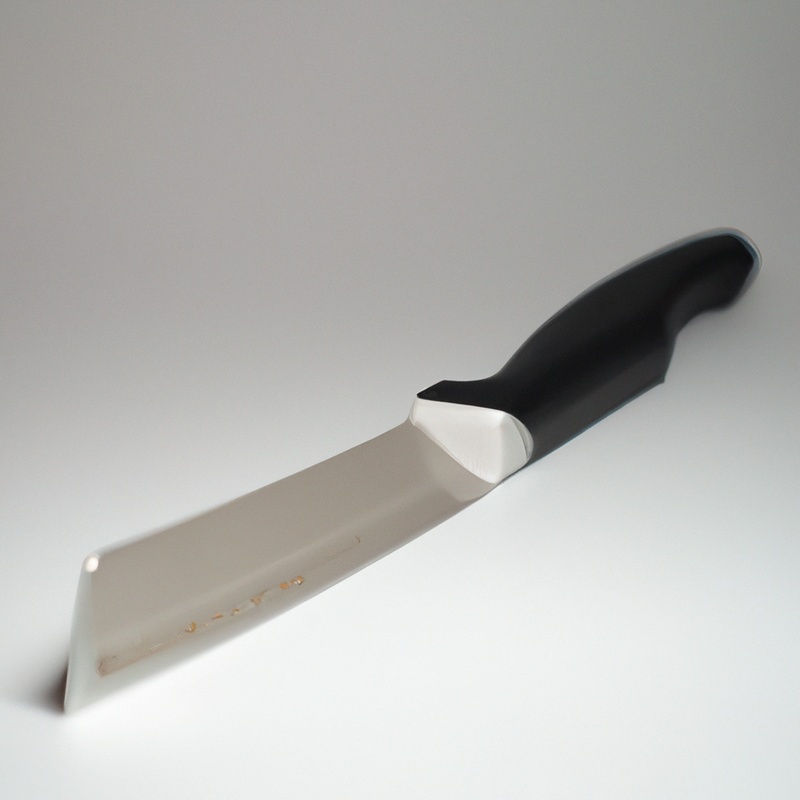
Finding the Right Chef Knife Size and Weight for a Comfortable Grip
Finding the right size and weight for a comfortable grip is crucial for safe and efficient knife handling. A chef knife that is too heavy or large can tire out your hand and increase the risk of accidents.
On the other hand, a knife that is too small or light won’t provide enough leverage or control for tougher cuts.
To find the best fit, it’s important to consider your hand size and the type of work you’ll be doing with the knife. Most chef knives come in sizes ranging from 6 to 12 inches, with 8-inch being the most common.
However, chefs with smaller hands may prefer a 6 or 7-inch blade, while those with larger hands may opt for a 10 or 12-inch blade.
The weight of the knife also plays a role in comfort and control. Heavier knives can be useful for tackling harder, denser ingredients, while lighter knives may be better for intricate cuts and slicing.
It’s important to pay attention to the balance of the knife as well, as a well-balanced knife will feel more comfortable and require less effort to use.
In short, finding the right chef knife size and weight is a matter of personal preference and intended use. It’s recommended to try out different sizes and weights before making a purchase in order to find the perfect fit for your hand and style of cooking.
Gripping Techniques for Different Types of Cuts and Ingredients
Gripping techniques vary based on the type of cut you intend to make and the ingredients you are using. The pinch grip is the most commonly used technique for precision cuts like slicing and dicing.
It involves using your thumb and index finger to hold the base of the blade while the other three fingers wrap around the handle.
For larger cuts like chopping, the hammer grip is recommended. It involves holding the handle with all your fingers while the blade rests against the palm.
When working with round ingredients like onions or potatoes, the claw grip is ideal.
It involves curling your fingertips back while using your knuckles to guide the knife. Avoid gripping too tightly and remember to adjust your grip as needed for optimum safety and precision.
Common Grip Mistakes to Avoid for Optimum Safety
Common Grip Mistakes to Avoid for Optimum Safety:
- Choking up on the handle: Gripping the handle too close to the blade can result in accidental cuts or loss of control. Always maintain a comfortable distance between your hand and the blade.
- Gripping the handle too tightly: Holding the knife with a death grip can lead to hand fatigue and loss of control. Use a relaxed and light grip to maintain control and reduce the risk of injury.
- Not positioning your fingers correctly on the blade: Placing your fingers on top of the blade or in front of the handle can result in cuts or slips. Keep your fingers behind the blade and on the handle to maintain control.
- Using a mismatched grip for the task: Different tasks require different types of grips. Using a pinch grip for a rocking motion, or a handle grip for detail work, can result in reduced efficiency and accidents.
By avoiding these common grip mistakes, you can significantly reduce the risk of injury and ensure optimum safety while using a chef knife.
Grip Adjustment for Left-Handed Chefs
Left-handed chefs may find it challenging to grip a chef knife traditionally designed for right-handed users. However, with a few simple adjustments, left-handed chefs can comfortably and safely grip a chef knife.
Firstly, hold the knife with your left hand and position your thumb on the blade’s spine, pointing towards the knife’s tip.
Next, place your other four fingers on the handle, ensuring that your grip is firm but not too tight. Some left-handed chefs may prefer to reverse the blade’s direction completely so the handle is on the opposite side, allowing for a more natural grip.
Experiment and find what works best for you.
Remember that your grip should always feel comfortable and secure to enable precise and efficient knife handling.
Strengthen Your Grip and Improve Dexterity for Efficient Knife Handling
To strengthen your grip and improve dexterity for efficient knife handling, consider incorporating exercises into your daily routine that involve squeezing and holding onto objects. Grippers, stress balls, and hand grips can help build hand and forearm strength.
Additionally, practicing knife handling techniques with a weighted training knife or a dull blade can help improve grip and dexterity.
Remember to always start slow and gradually increase the level of difficulty. By strengthening your grip and improving dexterity, you will have better control over your chef knife and reduce the risk of accidents.
Proper Maintenance of Your Chef Knife for Consistent Grip Performance
Proper maintenance of your chef knife is crucial for consistent grip performance. Here are some tips to ensure your knife stays in top condition:
- Keep your knife clean and dry after each use to prevent rust and bacterial growth.
- Sharpen your knife regularly to maintain its sharpness and ensure smooth cutting.
- Use a honing steel to straighten out any bends or nicks in the blade.
- Oil your knife with food-grade mineral oil to protect it from moisture and rust.
- Store your knife in a knife block or sheath to prevent damage to the blade and maintain a sharp edge.
By following these maintenance tips, you can improve your knife’s grip and performance, ensuring safe and efficient cutting every time.
Additional Safety Measures to Implement When Working with a Chef Knife
In addition to proper grip and technique, there are several additional safety measures that every chef should implement when working with a chef knife. These include:
- Sharpness: A dull knife requires more force to cut through food, and this can lead to slips and accidents. Ensure that your knife is sharp, and hone it regularly.
- Cutting Board Stability: A stable cutting board is essential to prevent the knife from slipping and to maintain control. Use a non-slip cutting board and ensure that it is firmly in place before you begin.
- Finger Placement: Keep your fingers away from the blade and use a ‘claw grip.’ Tuck your fingertips under your knuckles and use your knuckles as a guide for the blade.
- Cutting Motion: When cutting, use a smooth rocking motion from the tip to the heel of the blade. Avoid twisting or jerking the knife, as this can cause loss of control.
- Storage: Always store your knife in a safe and secure location, such as a knife block or magnetic strip. This helps to prevent accidental cuts when reaching for other tools.
By implementing these additional safety measures, you can minimize the risk of accidents and injuries while working with a chef knife, ensuring maximum control and safety in the kitchen.
Benefits of Properly Gripping a Chef Knife for Precision and Creativity
Properly gripping a chef knife provides several benefits, including increased precision and creativity in the kitchen. When you have a secure and comfortable grip on your knife, you can better control the blade’s movement, ensuring accurate cuts and slices.
This precision allows you to showcase your creativity with intricate and visually appealing dishes.
A proper grip also helps reduce fatigue and strain on your hands and arms, allowing you to work for longer periods without discomfort or loss of control. Overall, developing a strong and consistent grip is essential for mastering the craft of cooking and achieving your culinary goals.
Final Verdict
Mastering the proper grip of a chef knife is crucial for control and safety in the kitchen. As we’ve explored, understanding the different parts of the knife and their functions, finding the right size and weight, and utilizing different gripping techniques can improve precision and creativity while reducing the risk of injury.
By avoiding common grip mistakes and strengthening our dexterity, we can take our skills to the next level.
Remember to implement proper maintenance and additional safety measures to ensure consistent grip performance. By following these tips, we can confidently wield our chef knives and create delicious meals with precision and ease.
Trust in your grip and let your creativity flow.
Happy cooking!

